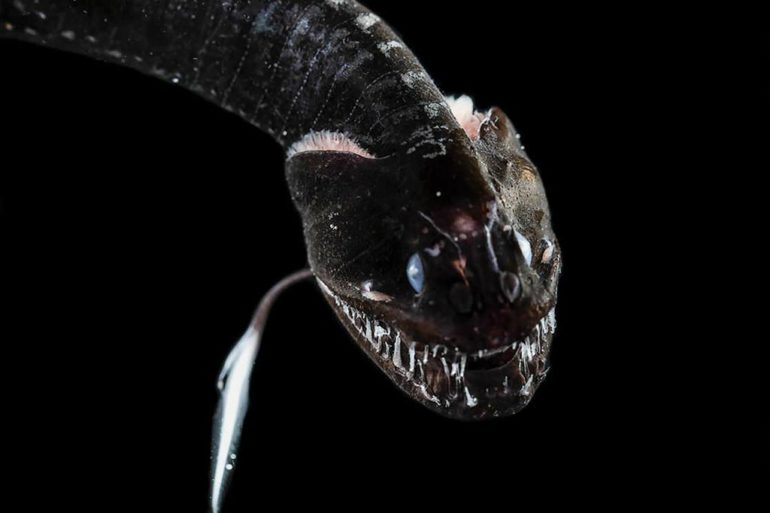A team of marine biologists have discovered 16 new species of terrifying deep-sea fish that reflect almost no light at all, Wired reports — much like the ultra-black material Vantablack.
Marine biologist Karen Osborn was astonished when she attempted to take pictures of a fangtooth, a terrifying fanged monster of the deep sea, for cataloguing reasons. The fish appeared to absorb almost all of the light her underwater studio shone at it, leaving only eerie silhouettes.
“I had tried to take pictures of deep-sea fish before and got nothing but these really horrible pictures, where you can’t see any detail,” Osborn, who co-authored a paper about the fish published in Current Biology, told Wired. “How is it that I can shine two strobe lights at them and all that light just disappears?”
“It’s like looking at a black hole,” lead author Alexander Davis, a Duke University biologist, told The New York Times.
Some of the newly discovered species are so dark that they absorb 99.956 percent of light that hits it. For context, last year MIT engineers claimed they accidentally created the darkest material that absorbs 99.995 percent of incoming light — 10 times darker than Vantablack, an extremely dark and difficult to produce carbon nanotube material designed by British nanotech company Surrey Nanosystems.
“We had no idea that there were any fishes at all that were ultra-black,” Davis told Wired. “As far as we knew, the only vertebrates that were ultra-black at all were these birds-of-paradise and a couple other bird species.”
“It was the first case we have of something this black really being used as…
